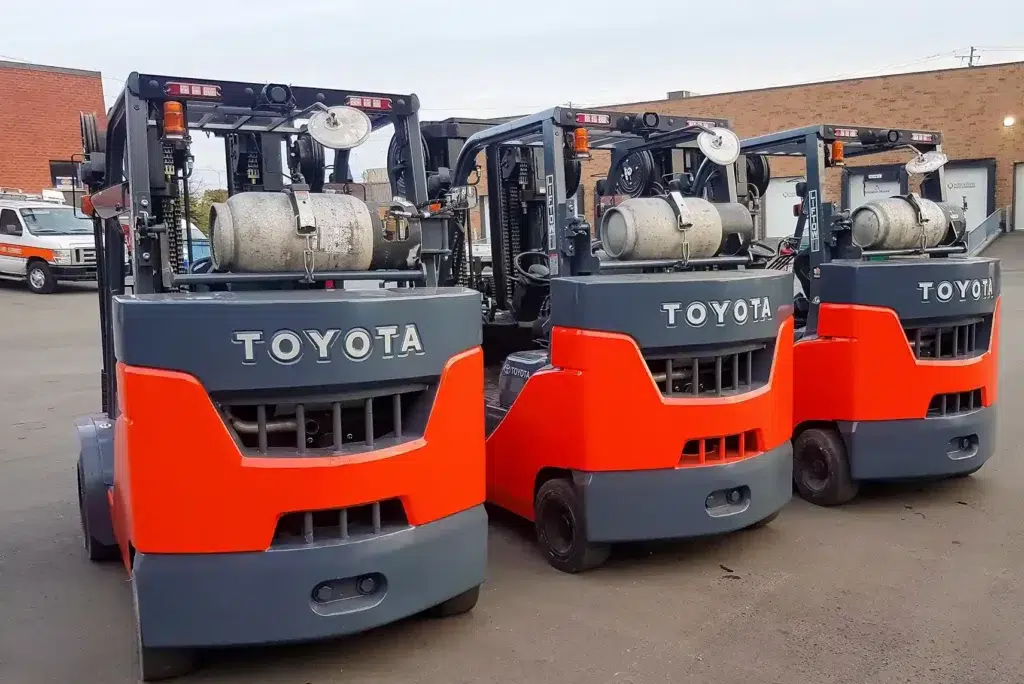Forklift trucks play a vital role in numerous industries, streamlining the transportation of bulky goods with precision and efficiency. Yet, it is more complex, and it requires expertise, carefulness, and safety protocols to avoid any accident.
This blog will guide you through the basics of how to operate a forklift truck safely and effectively.
What is a Forklift?
Before you learn how to operate a forklift truck, you must understand its mechanics and basic structure. Its basic mechanical anatomy consists of a fuel source like diesel, petrol, propane or an electric battery, lifting hydraulics, steering controls and the most recognizable feature: the lifting forks on the front.

Essentials of Forklifts
Licensing Requirements
According to The Occupational Safety and Health Administration (OSHA), operating a forklift truck requires specific training and proper certification for the drivers. Ensure your employee has earned a license after proper training to operate the forklift safely.
Safety First
When you are about to lift heavy loads, safety is a priority. Before you lift any load, you must carefully inspect every part of the machinery. You must wear appropriate personal protective equipment (PPE), including a hard hat, safety shoes, and high-visibility clothing. You must identify any signs of wear, tear, potential leakage, lift and tilt functioning, or loose connection. This involves pre-operation inspection.
Pre-Operation Inspection
Pre-operation inspection will decide whether to use the truck or not. If the truck passes the pre-operation inspection, only then pass it for operation; otherwise, send it for maintenance. Pre-operation inspection varies with the forklift truck type; however, general inspection includes;
- Visual check-up with the engine off
- Check all the fluid levels
- Check all the safety guards
- Check for forks and tire condition
- Check for any wear or tear
- Check for operational controls with the engine on
- Check for accelerator, brakes and steering controls
- Check for horn and light functioning
Operate a Forklift Truck
- Once you have checked the machine and ensured the safety protocols, you can start operating the forklift truck. Turn the engine on by turning the key according to the operation manual. You must ensure that all the gear is in a neutral position. To avoid any problems, lift the forks 2-4 inches above the ground using the control levers.
- Before accelerating forward, you must understand all the controls, their location points and the functioning of the forklift, like steering, brake controls, accelerators and lifting and tilting controls. Before operating the forklift truck to lift loads, you must practice these controls in a safe environment for training.
- Just like a car, you press the accelerator and move forward towards the load to lift. Control your movement and direction with the steering controls. After reaching your point, position the forks under the load you want to lift. Position the forks carefully so that they may lift the load with balance. Lift the load to a height as needed and lower it according to your required height. Lifting and lowering can be controlled by the lift controls.
- You must be aware of your surroundings when operating a forklift truck. Use mirrors and horns to signal your presence to pedestrians and colleagues. Keep a safe distance from obstacles, ramps, and edges at all times to avoid any risk of accidents.
- After completing your job, park the forklift in a specific area designed for parking away from traffic and pedestrian walkways. You must not leave the forks on a higher level. Lower the forks to the ground level and engage the parking brake. Finally, after ensuring safety, turn off the engine following the manufacturer’s instructions.
Operating a forklift truck is far more than just lifting heavy objects—it consists of complex operations that require precision and safety at the foremost. The Solid Hook Professionals will provide you complete forklifting service and training, to lift, load and unload heavy machinery and other items with our skilled licensed professionals.